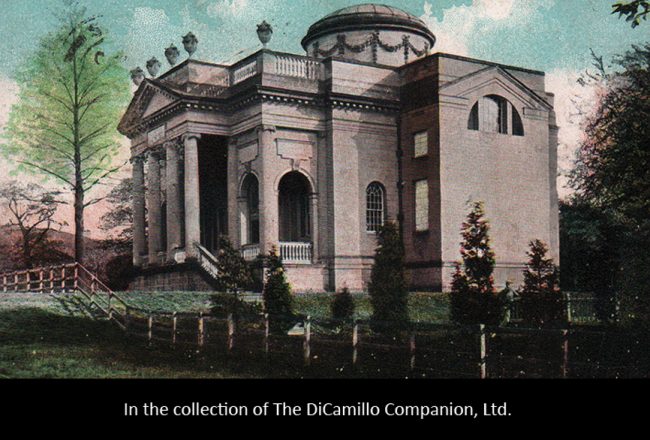
The chapel from a 1905 postcard
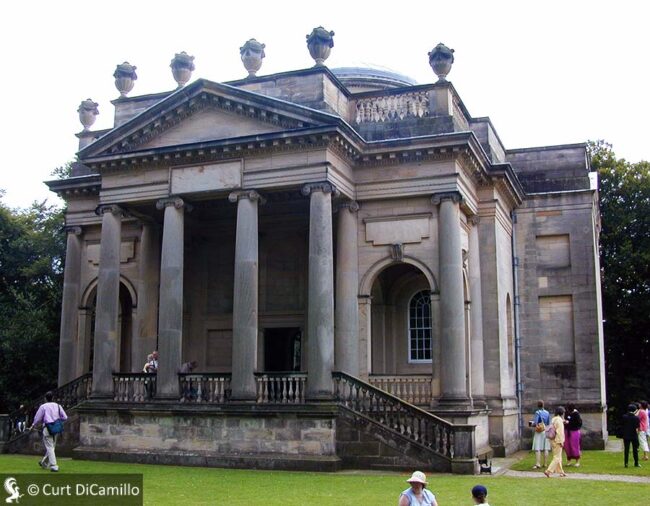
The chapel in 2003
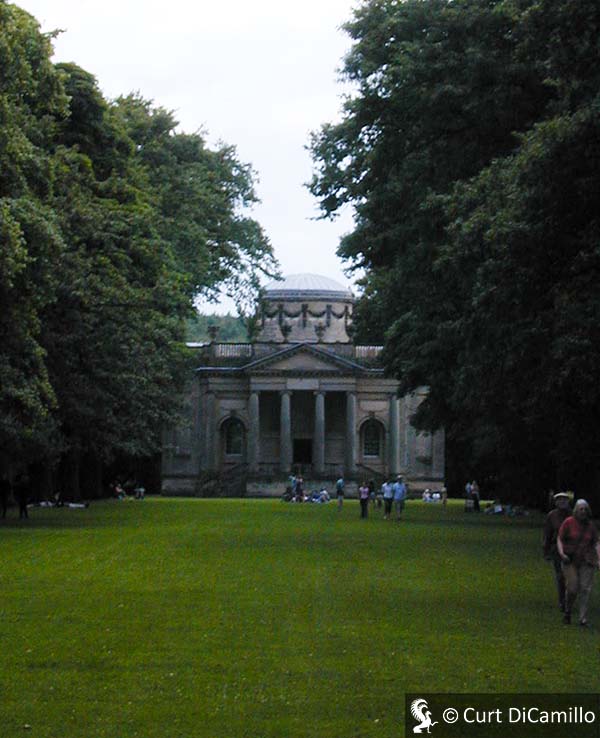
The chapel
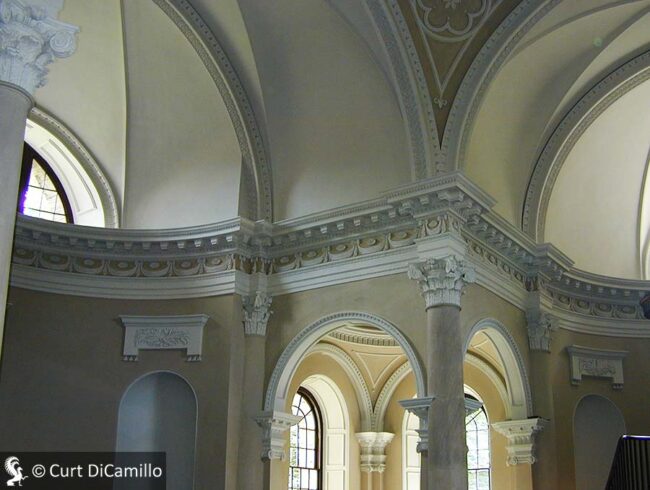
Interior of the chapel
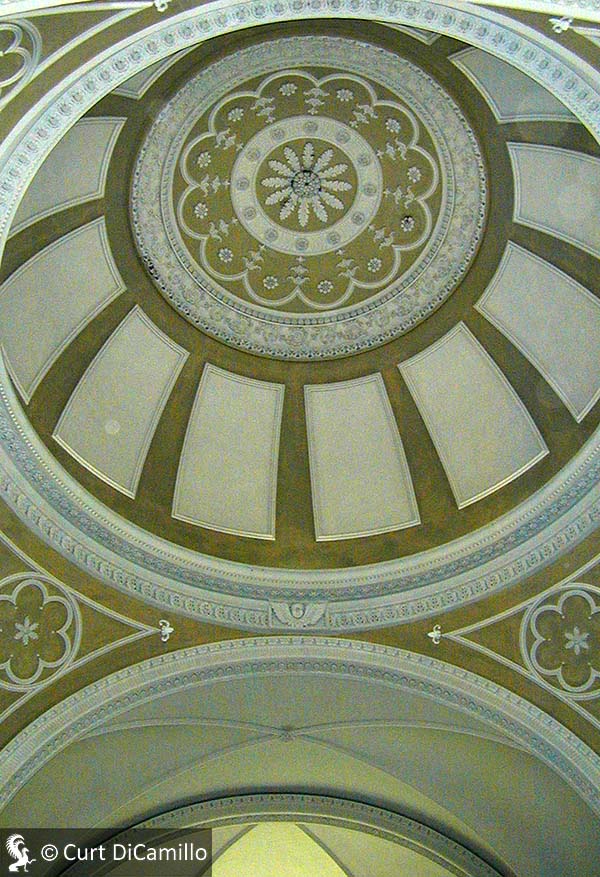
Interior dome of the chapel
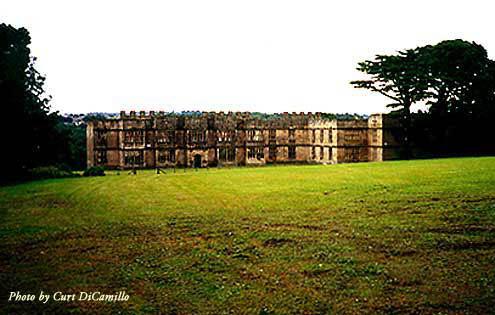
The Ruined House
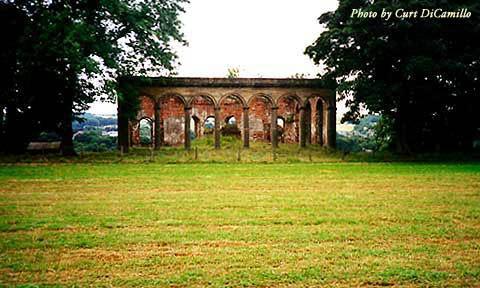
The Ruined Orangery
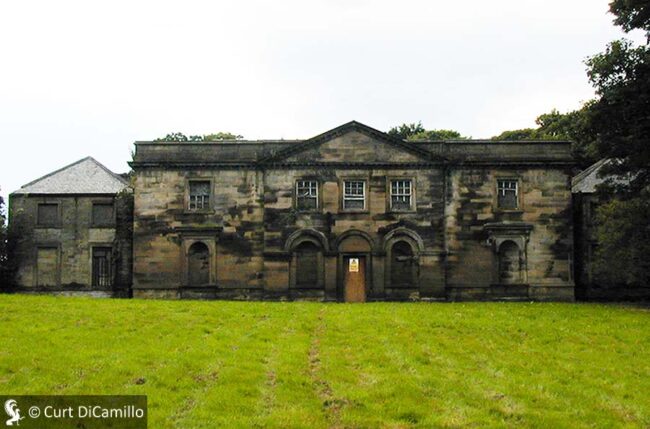
The derelict stables in 2003
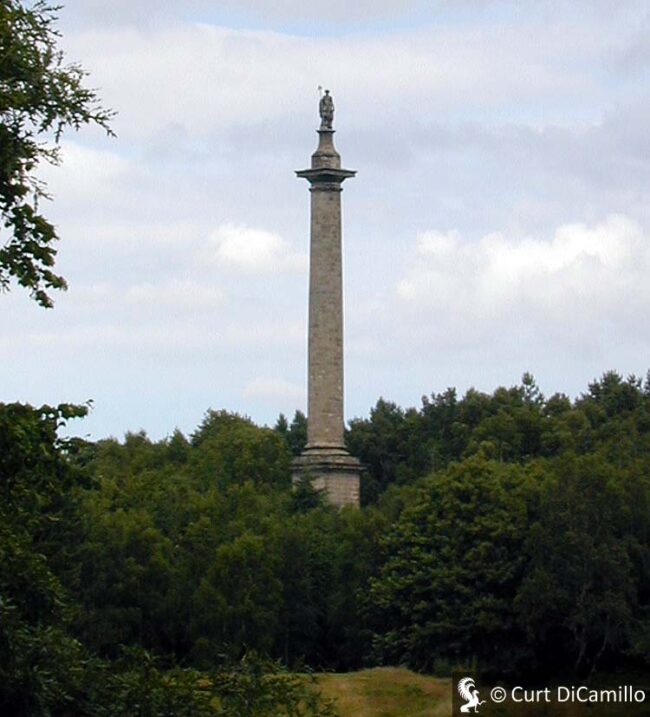
The Column to Liberty
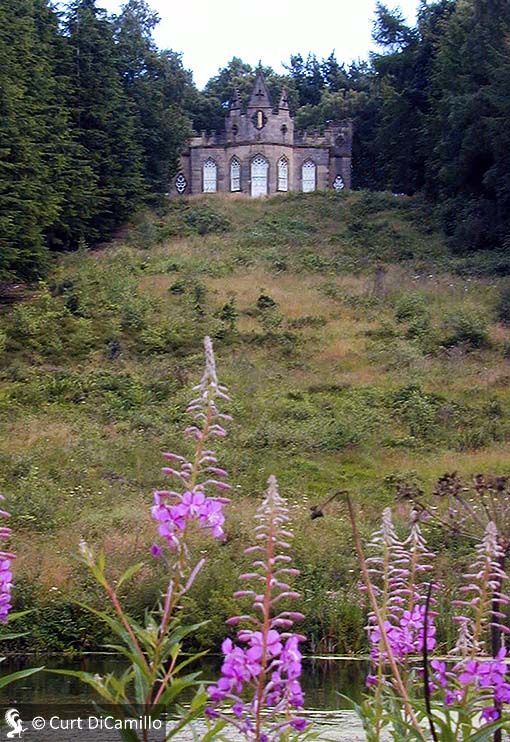
The banqueting house
Built / Designed For: William Blakiston
House & Family History: The Marley family owned the Gibside Estate from circa 1200. Roger Blakiston of Coxhoe purchased Gibside in 1450; William Blakiston rebuilt the house circa 1625. When Sir Francis Blakison died in 1713, the Bowes family acquired Gibside. Mary Eleanor Bowes, who married John, 9th Earl of Strathmore, succeeded her father, George Bowes, as the owner of the estate. The death in 1776 of the earl left the countess a young and wealthy widow. Mary Eleanor, sometimes referred to as "The Unhappy Countess," is famous for her subsequent entanglement with an Irishman by the name of Captain Andrew Robinson Stoney Bowes (he added her maiden name to his surname), from whom the expression "stone broke" is derived. The countess and Stoney had frequent clandestine meetings at the "Running Footman" (a copy of a classical statue of a gladiator) in the grounds of St. Paul's Walden Bury, the countess's Hertfordshire estate). Desperate to snag the rich young widow, Stoney, who was already married, schemed to secure her affection by pretending to fight a duel to defend her honor. The duel was to be with the editor of "The Morning Post," whose paper had been printing rumors about her affair with George Grey (most likely Stoney had written both sides of the correspondence himself). The mock duel took place in London and Stoney was seemingly mortally wounded; overwhelmed by his devotion to her, Mary Eleanor agreed to his dying wish and married him on the spot. It quickly became apparent that Stoney was quite unharmed; soon thereafter his harassment of her began when he discovered that all of Mary Eleanor's property would not belong to him without his wife's written consent. Stoney bullied and harassed Mary Eleanor, spent much of her fortune, and ruined the plantations of her northern estates at Gibside, but she stood firm and tried, unsuccessfully, to divorce him on the grounds of cruelty. Finally, on the afternoon of November 10, 1786, in a desperate attempt, Stoney had Mary Eleanor kidnapped from her coach in Oxford Street in London and had her carried by his accomplices to the north of England. It was a ten-day chase by stagecoach, as Mary Eleanor's friends were in pursuit. At one point Stoney held a gun to her head and demanded that Mary Eleanor drop the divorce suit; she refused. The Unhappy Countess successfully escaped in County Durham with the help of some farm workers. The story of Mary Eleanor's treatment, kidnapping, and subsequent escape was big news at the time; Stoney was caught and subsequently served time in debtor's prison (he had been using all of Mary Eleanor's money that he could lay his hands to pay his gambling debts). Mary Eleanor did not marry again. The experiences of Mary Eleanor inspired William Makepeace Thackeray's "The Luck of Barry Lyndon" (1844). This amazing woman was also a keen botanist; she arranged gatherings at St. Paul's Walden Bury of prominent flowers painters of her day, started a collection of botanical books (some of which are still in the house), and commissioned the explorer William Paterson to collect exotic plants in South Africa. She purchased Stanley House (later the home of Sir William Hamilton) near the Chelsea Physic Garden in London and there built greenhouses and conservatories to house her exotic plants. Mary Eleanor's son, the 10th Earl of Strathmore, was the heir to Gibside; he reconstructed the house in 1805, hiring Gilkie, based on his work at Ford Castle, Northumberland. (The 10th Earl lived primarily at Streatlam Castle). Land army girls were billeted in the house during the Great War, 1914-18. A fireplace from Gibside, with Hercules and Samson supporting a mantle decorated with the Blakiston arms, was installed in the billiard room at Glamis Castle. The chapel and the long walk at Gibside were given to the National Trust in 1974 by the executors of the 16th Earl of Strathmore. In 1993 the trust acquired a further 353 acres of the Gibside Estate, which included the ruins of the house, the Column to Liberty, and the orangery. It is the trust's intention to restore, as fully as possible, the integrity of the original Gibside Estate. The ruins of the house are listed on the Heritage at Risk Register.
Comments: Gibside is considered one of the greatest 18th century landscapes in northern England.
Garden & Outbuildings: George Bowes created the landscape park circa 1730-60. The 10th Earl of Strathmore replanted the woods in the late 18th century. Daniel Garrett designed the Banqueting House (and possibly the Gothic Tower) in 1743, the Palladian stables in 1746, and the Gothic Banqueting House in 1751. A long walk runs from the famous Column of Liberty to the chapel, with the ruins of the house on one side of the walk.
Chapel & Church: James Paine designed the chapel circa 1760; it was completed for the 10th Earl of Strathmore in 1812 by the architect Alexander Gilkie and is the chief attraction today at Gibside.
Architect: Daniel Garrett
Date: 1743-51Architect: Alexander Gilkie
Date: 1803-13
Title: Biographical Dictionary of British Architects, 1600-1840, A - HARDBACK
Author: Colvin, Howard
Year Published: 2008
Reference: pg. 411
Publisher: New Haven: Yale University Press
ISBN: 9780300125085
Book Type: Hardback
Title: Gibside Guidebook
Author: NA
Year Published: 1999
Reference: pgs. 27-30, 32
Publisher: London: The National Trust
ISBN: NA
Book Type: Light Softback
Title: English Country Houses: Early Georgian, 1715-1760
Author: Hussey, Christopher
Year Published: 1955
Publisher: London: Country Life Limited
ISBN: NA
Book Type: Hardback
Title: Lost Houses of County Durham
Author: Meadows, Peter; Waterson, Edward
Year Published: 1993
Publisher: Yorkshire: Jill Raines
ISBN: 0951649418
Book Type: Softback
House Listed: Grade II*
Park Listed: Grade I
Past Seat / Home of: Marley family, circa 1200-? Roger Blakiston, 15th century; Blakison family here until 1713. Sir George Bowes, 18th century; Mary Eleanor Bowes, Countess of Strathmore, 18th century; Thomas Lyon-Bowes, 12th Earl of Strathmore and Kinghorne, 19th century.
Current Ownership Type: The National Trust
Primary Current Ownership Use: Visitor Attraction
Ownership Details: Chapel is open to the public. House is a stabilized ruin.
House Open to Public: Grounds Only
Phone: 01207-541-820
Fax: 01207-541-830
Email: [email protected]
Website: https://www.nationaltrust.org.uk
Historic Houses Member: No